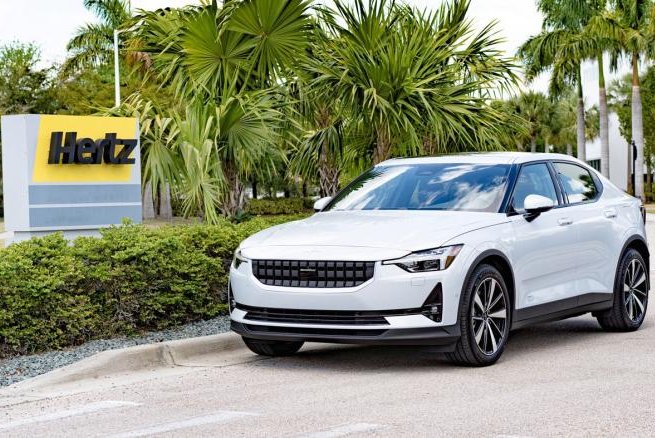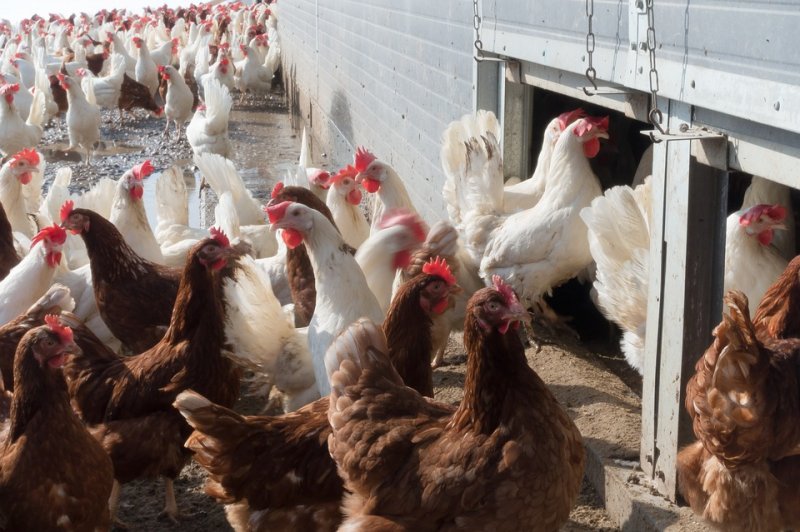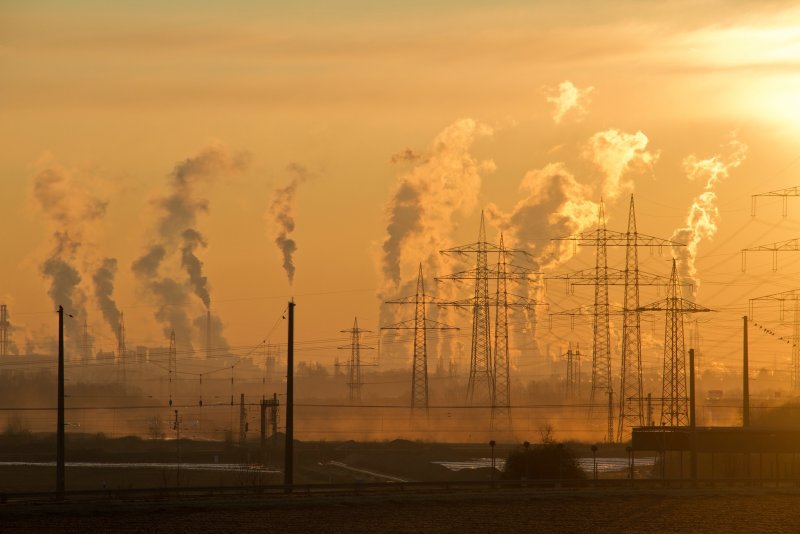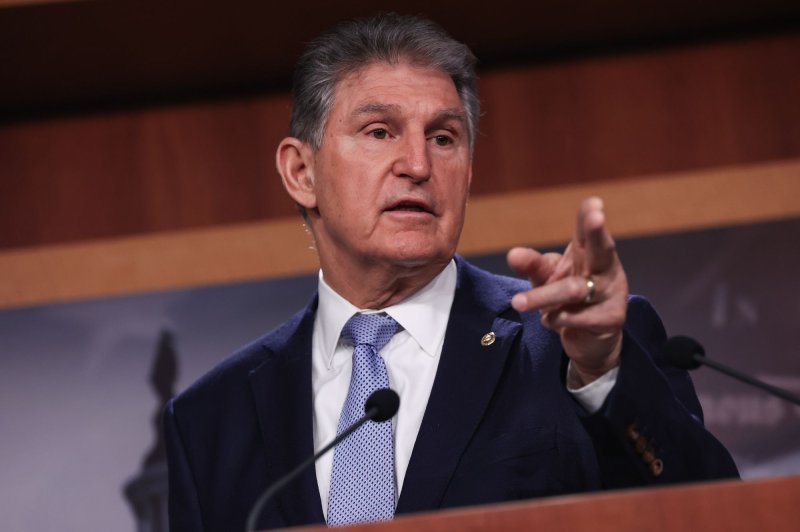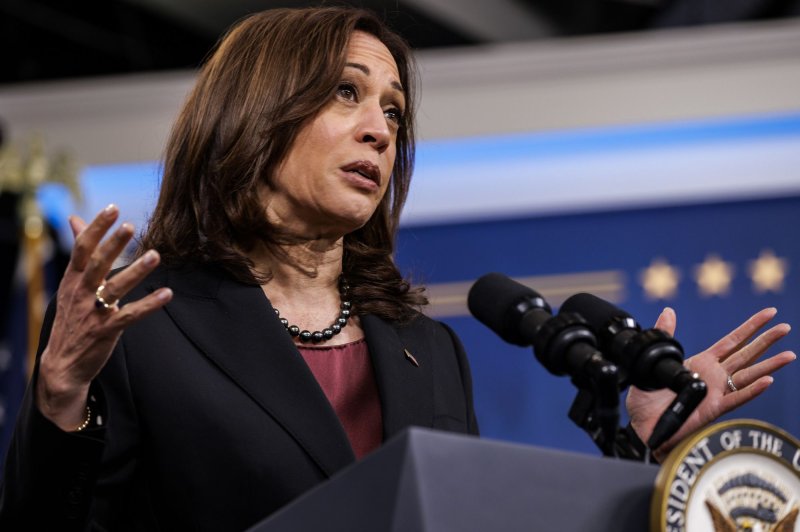By FRANK JORDANS and SETH BORENSTEIN

1 of 10
BERLIN (AP) — Temperatures on Earth will shoot past a key danger point unless greenhouse gas emissions fall faster than countries have committed, the world’s top body of climate scientists said Monday, warning of the consequences of inaction but also noting hopeful signs of progress.
U.N. Secretary-General Antonio Guterres said the report by the Intergovernmental Panel on Climate Change revealed “a litany of broken climate promises” by governments and corporations, accusing them of stoking global warming by clinging to harmful fossil fuels.
“It is a file of shame, cataloguing the empty pledges that put us firmly on track toward an unlivable world,” he said.
Governments agreed in the 2015 Paris accord to keep global warming well below 2 degrees Celsius (3.6 Fahrenheit) this century, ideally no more than 1.5 degrees Celsius (2.7 Fahrenheit). Yet temperatures have already increased by over 1.1C (2F) since pre-industrial times, resulting in measurable increases in disasters such flash floods, extreme heat, more intense hurricanes and longer-burning wildfires, putting human lives in danger and costing governments hundreds of billions of dollars to confront.
“Projected global emissions from (national pledges) place limiting global warming to 1.5C beyond reach and make it harder after 2030 to limit warming to 2C,” the panel said.
In other words, the report’s co-chair, James Skea of Imperial College London, told The Associated Press: “If we continue acting as we are now, we’re not even going to limit warming to 2 degrees, never mind 1.5 degrees.”
Ongoing investments in fossil fuel infrastructure and clearing large swaths of forest for agriculture undermine the massive curbs in emissions needed to meet the Paris goal, the report found.
Emissions in 2019 were about 12% higher than they were in 2010 and 54% higher than in 1990, said Skea.
The rate of growth has slowed from 2.1% per year in the early part of this century to 1.3% per year between 2010 and 2019, the report’s authors said. But they voiced “high confidence” that unless countries step up their efforts to cut greenhouse gas emissions, the planet will on average be 2.4C to 3.5C (4.3 to 6.3F) warmer by the end of the century — a level experts say is sure to cause severe impacts for much of the world’s population.
“Limiting warming to 1.5C requires global greenhouse gas emissions to peak before 2025 at the latest and be reduced by 43% by 2030,” he said.
Such cuts would be hard to achieve without without drastic, economy-wide measures, the panel acknowledged. It’s more likely that the world will pass 1.5C and efforts will then need to be made to bring temperatures back down again, including by removing vast amounts of carbon dioxide — the main greenhouse gas — from the atmosphere.
Many experts say this is unfeasible with current technologies, and even if it could be done it would be far costlier than preventing the emissions in the first place.
The report, numbering thousands of pages, doesn’t single out individual countries for blame. But the figures show much of the carbon dioxide already in the atmosphere was released by rich countries that were the first to burn coal, oil and gas beginning with the industrial revolution.
The U.N. panel said 40% of emissions since then came from Europe and North America. Just over 12% can be attributed to East Asia, which includes China. But China took over the position as world’s top emissions polluter from the United States in the mid-2000s.
Many countries and companies have used recent climate meetings to paint rosy pictures of their emissions-cutting efforts, while continuing to invest in fossil fuels and other polluting activities, Guterres charged.
“Some government and business leaders are saying one thing but doing another,” he said. “Simply put, they are lying. And the results will be catastrophic.”

A Karbi tribal woman whose agriculture land had been transfered to build a solar power plant grazes her cow near the plant in Mikir Bamuni village, Nagaon district, northeastern Assam state, India, Feb. 18, 2022. A United Nation-backed panel plans to release a highly anticipated scientific report on Monday, April 4, 2022, on international efforts to curb climate change before global temperatures reach dangerous levels. (AP Photo/Anupam Nath)
The report isn’t without some hope, however.
Its authors highlight myriad ways in which the world can be brought back on track to 2C or even, with great effort, return to 1.5C after that threshold has been passed. This could require measures such as the removal of CO2 from the atmosphere with natural or artificial means, but also potentially risky technologies such as pumping aerosols into the sky to reflect sunlight.
Among the solutions recommended are a rapid shift away from fossil fuels toward renewable energy such as increasingly cheap solar and wind power, the electrification of transport, less meat consumption, more efficient use of resources and massive financial support for poor countries unable to pay for such measures without help.
The situation is as if humanity has “gone to the doctor in a very unhealthy condition,” and the doctor is saying “you need to change, it’s a radical change. If you don’t you’re in trouble,” said report co-author Pete Smith, a professor of soils and global change at the University Aberdeen.
“It’s not like a diet,” Smith said. “It is a fundamental lifestyle change. It’s changing what you eat, how much you eat and get on a more active lifestyle.”
One move often described as “low-hanging fruit” by scientists is to plug methane leaks from mines, wells and landfills that release the potent but short-lived greenhouse gas into the atmosphere. A pact forged between the United States and China at last year’s U.N. climate conference in Glasgow aims to do just that.
“The big message we’ve got (is that) human activities got us into this problem and human agency can actually get us out of it again,” said Skea, the panel’s co-chair.
The panel’s reports have become increasingly blunt since the first one was published in 1990, and the latest may be the last before the planet passes 1.5C of warming, Skea told the AP.
Last August, it said climate change caused by humans was “an established fact” and warned that some effects of global warming are already inevitable. In late February, the panel published a report that outlined how further temperature increases will multiply the risk of floods, storms, drought and heat waves worldwide.
Still, the British government’s former chief science adviser David King, who wasn’t involved in writing the report, said there are too optimistic assumptions about how much CO2 the world can afford to emit.
“We don’t actually have a remaining carbon budget to burn,” said King, who now chairs the Climate Crisis Advisory Group.
“It’s just the reverse. We’ve already done too much in the way of putting greenhouse gases up there,” he said, arguing that the IPCC’s calculation omits new risks and potentially self-reinforcing effects already happening, such as the increased absorption of heat into the oceans from sea ice loss and the release of methane as permafrost melts.
Such warnings were echoed by U.N. chief Guterres, citing scientists’ warnings that the planet is moving “perilously close to tipping points that could lead to cascading and irreversible climate impacts.”
“But high-emitting governments and corporations are not just turning a blind eye; they are adding fuel to the flames,” he said, calling for an end to further coal, oil and gas extraction. “Investing in new fossil fuels infrastructure is moral and economic madness.”
Vulnerable nations said the report showed big polluters have to step up their efforts before the next U.N. climate summit in Egypt this fall.
“We are looking to the G-20, to the world’s biggest emitters, to set ambitious targets ahead of COP27, and to reach those targets – by investing in renewables, cutting out coal and fossil fuel subsidies,” said Tina Stege, climate envoy for the Marshall Islands. “It’s long past time to deliver on promises made.”
___
Borenstein reported from Washington.
___
Follow AP’s climate coverage at https://apnews.com/hub/climate
___
Associated Press climate and environmental coverage receives support from several private foundations. See more about AP’s climate initiative here. The AP is solely responsible for all content.

1 of 7
It’s not the end of the world. It only seems that way.
Climate change is going to get worse, but as gloomy as the latest scientific reports are, including today’s from the United Nations, scientist after scientist stresses that curbing global warming is not hopeless. The science says it is not game over for planet Earth or humanity. Action can prevent some of the worst if done soon, they say.
After decades of trying to get the public’s attention, spur action by governments and fight against organized movements denying the science, climate researchers say they have a new fight on their hands: doomism. It’s the feeling that nothing can be done, so why bother. It’s young people publicly swearing off having children because of climate change.
University of Maine climate scientist Jacquelyn Gill noticed in 2018 fewer people telling her climate change isn’t real and more “people that we now call doomers that you know believe that nothing can be done.” Gill says it is just not true.
“I refuse to write off or write an obituary for something that’s still alive,” Gill told The Associated Press, referring to the Earth. “We are not through a threshold or past the threshold. There’s no such thing as pass-fail when it comes to the climate crisis.”
“It’s really, really, really hard to walk people back from that ledge,” Gill said.
Doomism “is definitely a thing,” said Wooster College psychology professor Susan Clayton, who studies climate change anxiety and spoke at a conference in Norway last week that addressed the issue. “It’s a way of saying ‘I don’t have to go to the effort of making changes because there’s nothing I can do anyway.’”
Gill and six other scientists who talked with The Associated Press about doomism aren’t sugarcoating the escalating harm to the climate from accumulating emissions. But that doesn’t make it hopeless, they said.
“Everybody knows it’s going to get worse,” said Woodwell Climate Research Center scientist Jennifer Francis. “We can do a lot to make it less bad than the worst case scenario.”
The United Nation’s Intergovernmental Panel on Climate Change just issued its third report in six months. The first two were on how bad warming is and how it will hurt people and ecosystems, with today’s report focusing on how the extent of disruption depends on how much fossil fuels are burned. It shows the world is still heading in the wrong direction in its fight to curb climate change, with new investments in fossil fuel infrastructure and forests falling to make way for agriculture.
“It’s not that they’re saying you are condemned to a future of destruction and increasing misery,” said Christiana Figueres, the former U.N. climate secretary who helped forge the 2015 Paris climate agreement and now runs an organization called Global Optimism. “What they’re saying is ’the business-as-usual path ... is an atlas of misery ’ or a future of increasing destruction. But we don’t have to choose that. And that’s the piece, the second piece, that sort of always gets dropped out of the conversation.”
United Nations Environment Program Director Inger Andersen said with reports like these, officials are walking a tightrope. They are trying to spur the world to action because scientists are calling this a crisis. But they also don’t want to send people spiraling into paralysis because it is too gloomy.
“We are not doomed, but rapid action is absolutely essential,” Andersen said. “With every month or year that we delay action, climate change becomes more complex, expensive and difficult to overcome.”
“The big message we’ve got (is that) human activities got us into this problem and human agency can actually get us out of it again,” James Skea, co-chair of Monday’s report, said. “It’s not all lost. We really have the chance to do something.”
Monday’s report details that it is unlikely, without immediate and drastic carbon pollution cuts, that the world will limit warming to 1.5 degrees Celsius (2.7 degrees Fahrenheit) since pre-industrial times, which is the world’s agreed upon goal. The world has already warmed 1.1 degrees Celsius (2 degrees Fahrenheit). And earlier IPCC reports have shown that after 1.5 degrees, more people die, more ecosystems are in trouble and climate change worsens rapidly.
“We don’t fall over the cliff at 1.5 degrees,” Skea said, “Even if we were to go beyond 1.5 it doesn’t mean we throw up our hands in despair.”

Michael Mann, professor of atmospheric science at Penn State, arrives at the "Before the Flood" premiere on day 2 of the Toronto International Film Festival at the Princess of Wales Theatre on Sept. 9, 2016, in Toronto. Mann said scientists used to think Earth would be committed to decades of future warming even after people stopped pumping more carbon dioxide into the air than nature takes out. But newer analysis in recent years show it will only take a few years after net zero emissions for carbon levels in the air to start to go down because of carbon being sucked up by the oceans and forests. (Photo by Evan Agostini/Invision/AP, File)

Rutgers University Climate Scientist Jennifer Francis poses for a portrait during an interview in Washington, June 7, 2013. Climate change is going to get worse, but as gloomy as the latest scientific reports are, including today’s from the United Nations, scientist after scientist stress that curbing global warming is not hopeless. “Everybody knows it's going to get worse,” said Woodwell Climate Research Center scientist Francis. “We can do a lot to make it less bad than the worst case scenario.”

United Nations Under-Secretary-General and Executive Director of the UN Environment Programme Inger Andersen, right, accompanied by Secretary of State Antony Blinken, left, speaks during an oceans plastics event at the United Nations Environment Programme headquarters in Nairobi, Kenya, Nov. 18, 2021. Scientists say climate change is bad, getting worse, but it is not game over for planet Earth or humanity. “We are not doomed, but rapid action is absolutely essential,” Andersen said.
While he sees the increase in doom talk as inevitable, NASA climate scientist Gavin Schmidt said he knows first-hand that people are wrong when they say nothing can be done: “I work with people and I’m watching other people and I’m seeing the administration. And people are doing things and they’re doing the right things for the most part as best they can. So I’m seeing people do things.”
Pennsylvania State University climate scientist Michael Mann said scientists used to think Earth would be committed to decades of future warming even after people stopped pumping more carbon dioxide into the air than nature takes out. But newer analyses in recent years show it will only take a few years after net zero emissions for carbon levels in the air to start to go down because of carbon being sucked up by the oceans and forests, Mann said.
Scientists’ legitimate worries get repeated and amplified like in the kids game of telephone and “by the time you’re done, it’s ‘we’re doomed’ when what the scientist actually said was we need to reduce or carbon emissions 50% within this decade to avoid 1.5 (degrees of) warming, which would be really bad. Two degrees of warming would be far worse than 1.5 warming, but not the end of civilization,” Mann said.
Mann said doomism has become far more of a threat than denialism and he believes that some of the same people, trade associations and companies that denied climate change are encouraging people who say it is too late. Mann is battling publicly with a retired University of Arizona ecologist, Guy McPherson, an intellectual leader of the doom movement.
McPherson said he’s not part of the monetary system, hasn’t had a paycheck in 13 years, doesn’t vote and lived off the grid for a decade. He said all species go extinct and humans are no exception. He publicly predicted humanity will go extinct in 2026, but in an interview with The Associated Press said, “I’m not nearly as stuck on 2026,” and mentioned 2030 and changes to human habitat from the loss of Arctic summer sea ice.
Woodwell’s Francis, a pioneer in the study of Arctic sea ice who McPherson said he admires, said while the Arctic will be ice free by the summer by 2050, McPherson exaggerates the bad effects. Local Arctic residents will be hit hard, “the rest of us will experience accelerated warming and sea-level rise, disrupted weather patterns and more frequent extreme weather. Most communities will adapt to varying degrees,” Francis said. “There’s no way in hell humans will go extinct by 2026.”
Humans probably can no longer prevent Arctic sea ice from disappearing in the summer, but with new technology and emissions cuts, Francis said, “we stand a real chance of preventing those (other) catastrophic scenarios out there.”
Psychology professor Clayton said “no matter how bad things are, they can always be worse. You can make a difference between bad and worse... That’s very powerful, very self-affirming.”
___
Associated Press writer Frank Jordans contributed from Berlin.
___
Follow AP’s climate coverage at https://apnews.com/hub/climate
___
Follow Seth Borenstein on Twitter at @borenbears
___
Associated Press climate and environmental coverage receives support from several private foundations. See more about AP’s climate initiative here. The AP is solely responsible for all content.




